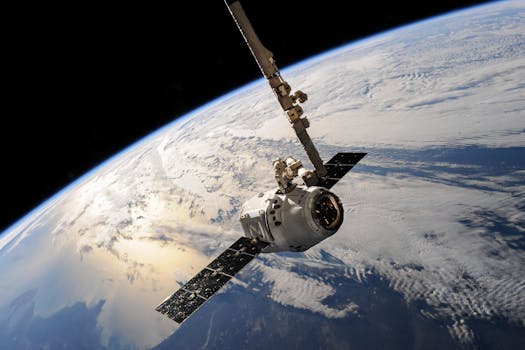
The Future of Satellites: Revolutionizing Global Connectivity
The future of satellites is poised to revolutionize global connectivity, enabling faster and more reliable communication, navigation, and remote sensing. With advancements in space technology, satellites are becoming increasingly important for a wide range of applications, from telecommunications and navigation to weather forecasting and environmental monitoring.
Satellites have been in use for several decades, but recent advancements in technology have made them more powerful, efficient, and cost-effective. The development of smaller, lighter, and more affordable satellites has made it possible for companies and organizations to launch their own satellites, increasing the number of satellites in orbit around the Earth. This has led to a significant improvement in the quality and availability of satellite-based services, including internet connectivity, navigation, and remote sensing.
One of the most significant trends in the future of satellites is the development of constellations of small satellites, known as satellite swarms. These constellations are designed to provide global coverage and enable real-time communication and data transfer. Companies such as SpaceX, OneWeb, and Amazon are investing heavily in the development of satellite swarms, which are expected to revolutionize the telecommunications industry. Satellite swarms will provide faster, more reliable, and more affordable internet connectivity, enabling people in remote and underserved areas to access the internet and connect with the rest of the world.
In addition to telecommunications, satellites are also being used for navigation and remote sensing. The Global Positioning System (GPS) is a network of satellites that provides location information and timing signals to GPS receivers on the ground. The GPS system is widely used for navigation, mapping, and tracking, and is an essential component of modern transportation systems. Satellites are also being used for remote sensing, which involves the use of satellite-based sensors to collect data about the Earth’s surface and atmosphere. Remote sensing is used for a wide range of applications, including weather forecasting, environmental monitoring, and natural resource management.
The future of satellites also holds great promise for scientific research and exploration. Satellites are being used to study the Earth’s climate, oceans, and land surfaces, and to monitor the effects of climate change. Satellites are also being used to explore the solar system and beyond, with missions such as the NASA’s James Webb Space Telescope and the European Space Agency’s Gaia mission. These missions are helping us to better understand the universe and our place in it, and are paving the way for future human exploration and settlement of space.
In conclusion, the future of satellites is exciting and full of possibilities. With advancements in space technology and the development of new applications, satellites are poised to play an increasingly important role in our daily lives. From telecommunications and navigation to scientific research and exploration, satellites are enabling us to connect, navigate, and understand the world in new and innovative ways. As the satellite industry continues to evolve and grow, we can expect to see even more exciting developments and innovations in the years to come.